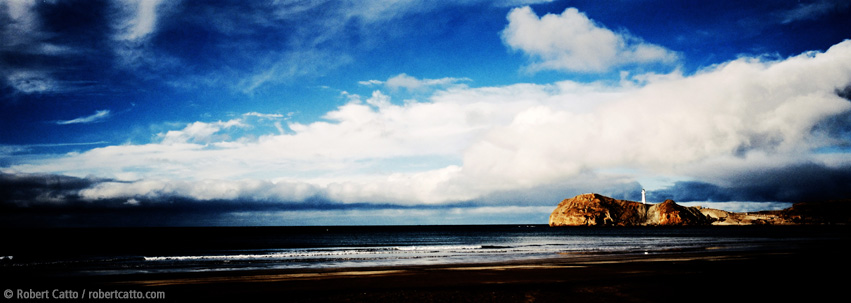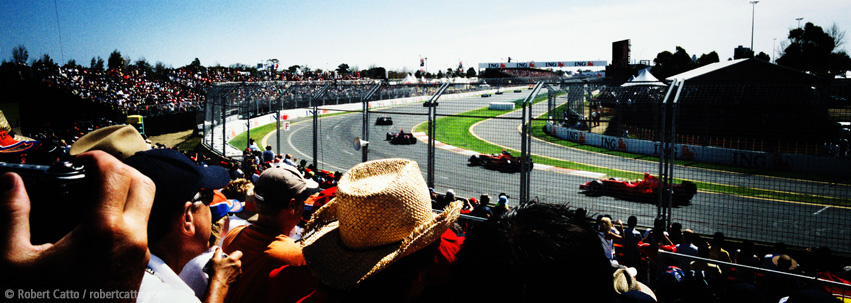Why the Fuji X-Series could become the most awesome cameras of all time, yo! Of ALL TIME!
Okay, maybe I'm getting a bit carried away here, BUT: this is my theory, which belongs to me. Ahem. A bit of history: in 1998, Hasselblad and Fuji teamed up to create a crazy rangefinder camera known in Japan as the Fuji TX-1, but to the rest of the world it was the Hasselblad X-Pan.
The system included three lenses, a 30mm, a 45mm and a 90mm, all small, pocketable sizes as you'd expect from a rangefinder kit; but the kicker was that the camera was effectively able to shoot TWO frames of 35mm film together as a double-width panorama, with none of your fancy digital sweep & stitch techniques - all done in the camera in a single click, with really great, clever lenses. And, at the flick of a switch, it would work like a normal 35mm camera and shoot the usual format.
The quality of the images was more like you'd expect from a medium format system (understandable, since the negatives were double-sized compared to 35mm), and those of us lucky enough to get our hands on one over the years learned to love the look of the panoramic ratio. Here's an example from mine, with the 45mm f/4:
Now, at the time, because this was a totally new format, there were obstacles to overcome. Shooting on film and having it processed meant finding a lab that wouldn't mount your slides for you (and cut your beautiful, sweeping panoramic frames in half), getting prints made at a lab was tricky as well, most 35mm film scanners would struggle for similar reasons, the 30 & 45mm lenses would vignette which meant centre-weighted graduated filters had to be mounted on them - and, of course, rolls of film were only half as long!
So - fast forward to 2011, Fuji announce the X100, the first in a series of new high-end rangefinder cameras. I think you can see where I'm going with this. Sure, the X-series lenses and mount would need to be different to accommodate the larger sensor size, but think of all the problems that have been overcome since the original was released:
- Film? We don't need no stinkin' film! A bigger, double-width sensor would simply mean larger files, and the general impression is that Fuji's X-Trans CMOS sensor is very good indeed. So, bigger memory cards (if you want) and you're away;
- Scanners? Pfft. See above;
- Prints? Most photographers who would be interested in such a camera have, or can get, exceptional quality inkjet printers from Epson or Canon that accept roll paper, so prints can be as long / wide as they like;
- Vignetting can easily be corrected in-camera or in post-production / RAW conversion - but I also wouldn't be surprised if a lot of it can be fixed in lens & sensor design these days.
And, a whole lot more besides - and that's before we start thinking about how the original design could be improved on.
Let's just pause to consider the beauty of the frame, and then imagine it through Fuji's own hybrid optical viewfinder, which came out with the X100 and the newer X-Pro 1. How hard could it possibly be to extend the width of that, as well as stretching the X-Pro 1 chassis to accommodate a wider sensor? The fundamental functionality of the camera is pretty much ready, it's a matter of expanding the physical body, the LCD screen on the back, adapting the older X-Pan lenses to suit - heck, they could probably even re-use the original mount and let us use those existing lenses! I really don't think anyone would mind manual focus in this case.
Because, here's the thing - what made me realise how much of a world-slayer this camera could be, is this: what's been the biggest boom in dSLR camera development in the last couple of years?
HD VIDEO.
Think about that, for a minute.
Picture a small, lightweight, manual focus, rangefinder (or, through the lens EVF camera) with a high-quality sensor and a range of top-quality lenses, that shot video in a format that was more like VistaVision than the standard 16:9 ratio. It's DIGITAL CINEMASCOPE, in the palm of your hand.
And which manufacturer is perfectly placed to create such a camera...? Let's see: how about the one who did it the first time, and is now heading back down the rangefinder path at a serious rate of knots, and taking no prisoners en route.
How many filmmakers would jump, to have a chance to shoot that!? Fuji's in-camera processing is already thought to be amongst the best on the market, plus you've got in-camera simulation of many of their photographic film stocks - it wouldn't be hard for them to add some of their cinema stocks as well, if needed.
So: NOW, have I got your attention?
p.s. Obviously, this is purely speculation on my part, I have no relationship with Fujifilm except as someone who buys their cameras. But, you don't ask, you don't get! And, Fuji, my mailing address is below for the pre-production sample to be delivered...





